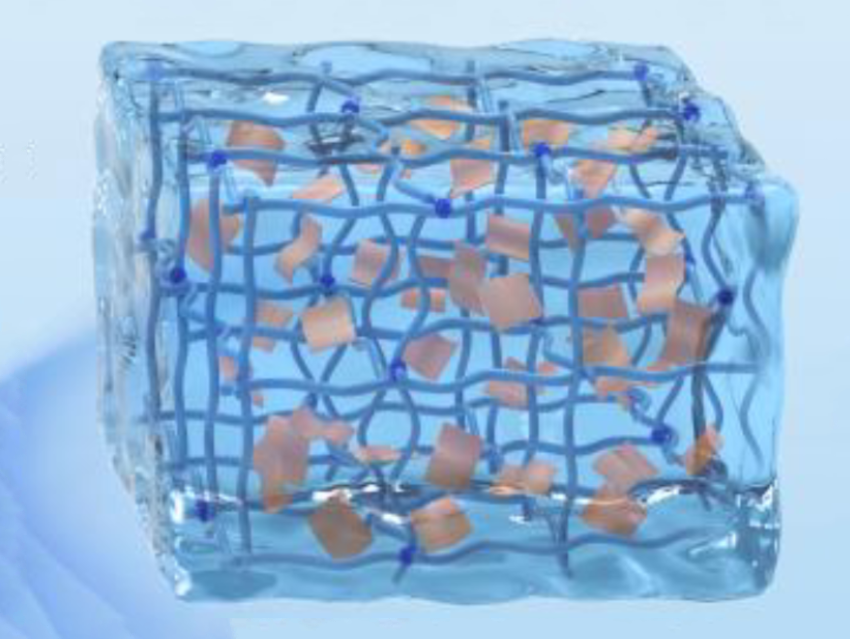Lithium-based batteries are widely used, and demand for the element is growing, but lithium supplies are limited. The extraction and recovery of lithium from reserves is important, e.g., for the storage of sustainable energy and the use of electric vehicles. However, the low efficiency of extraction threatens the sustainability of lithium supplies. Adsorption technologies for the extraction of lithium from lithium-containing solutions could be useful in this context, but the capacities, selectivities, and costs of the adsorbent materials could still be improved.
Guang Yang, Anhui Agricultural University, Hefei, China, Xubiao Luo, Nanchang Hangkong University, Nanchang, China, and Jinggangshan University, Ji’an, China, and colleagues have developed a mechanically robust, fluorine-rich hydrogel for highly efficient Li+ extraction from lithium-containing solutions (pictured schematically). The hydrogel was prepared via a simple one-pot polymerization of supramolecular nanosheets composed of fluorinated molecules, acrylic acid, and a small amount of a chemical crosslinker.
The nanosheets were obtained via the spontaneous supramolecular self-assembly of amphiphilic fluorine-containing monomers in an aqueous medium to form bilayer structures. They serve as nanocontainers for the capture of lithium ions. To obtain a hydrogel, these nanocontainers were then copolymerized with acrylic acid and N,N‘-methylenebisacrylamide (MBA) as a chemical crosslinker in the presence of ammonium persulfate at 70 °C.
The hydrogel exhibits a high lithium adsorption capacity of 122.3 mg g–1 and can be reused. It can selectively extract lithium ions from solutions containing multiple types of metal ions. For example, the separation of Li+ and Na+ is achieved with a high separation factor of ca. 154. The team found that specific Li–F interactions play an important role for the high recovery capability and Li+ selectivity. Overall, the work provides a promising approach to the efficient extraction and recovery of lithium resources from complex lithium-containing solutions.
- Fluorine‐Rich Supramolecular Nano‐Container Crosslinked Hydrogel for Lithium Extraction with Super‐High Capacity and Extreme Selectivity,
Liming Yang, Yunyun Tu, Hongyu Li, Wanli Zhan, Huiqin Hu, Yun Wei, Changli Chen, Ketao Liu, Penghui Shao, Min Li, Guang Yang, Xubiao Luo,
Angew. Chem. Int. Ed. 2023.
https://doi.org/10.1002/anie.202308702



